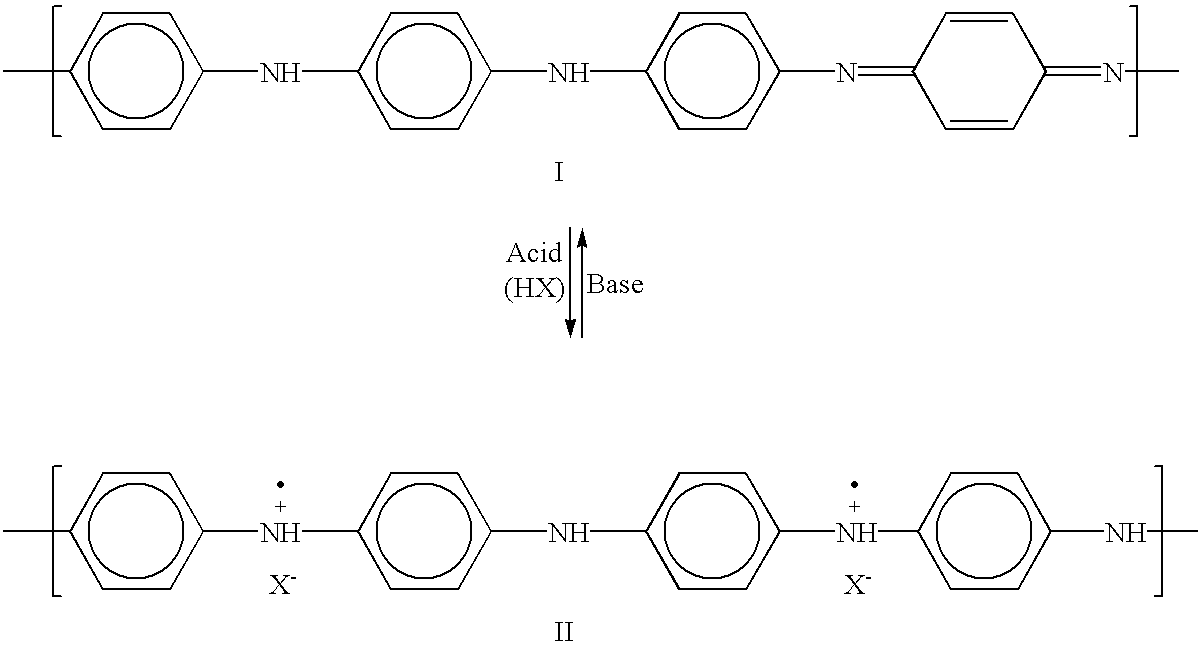Organic electronic devices having conducting self-doped polymer buffer layers
a technology of organic electronic devices and buffer layers, which is applied in the direction of discharge tubes/lamp details, discharge tubes luminescnet screens, other domestic articles, etc., can solve the problems of exacerbate performance failures that can occur, shadowed regions close to particles, and dark spots which can grow into larger and larger nons, so as to increase performance reliability
- Summary
- Abstract
- Description
- Claims
- Application Information
AI Technical Summary
Benefits of technology
Problems solved by technology
Method used
Image
Examples
example 1
OLED With Self-doped Polyaniline
An OLED device was constructed according to the method of Comparative Example 1, except the substrate was treated with an oxygen plasma for 4 minutes at 50 Watts and 200 millitorr of oxygen in a reactive ion etcher (Micro-RIE series 80, Technics, Inc., Dublin, Calif.) and a 600 .ANG. layer of self-doped water soluble polyaniline (Aldrich) was used in place of the externally doped polyaniline. The self-doped polyaniline was coated from a 5 weight % aqueous ammonia solution. In this construction, after spin coating of the self-doped polyaniline layer, the glass substrate was heated on a hotplate at 125.degree. C for 10 minutes to remove traces of water and ammonia. Then the remaining layers were added as described in Comparative Example 1. The device was operated at 20 mA / cm.sup.2 for 100 hours, during which the device exhibited an operating voltage increase from about 6.3 V to about 7.2 V with a corresponding drop in photocurrent from about 53 .mu.A to...
PUM
| Property | Measurement | Unit |
|---|---|---|
| voltage | aaaaa | aaaaa |
| constant current density | aaaaa | aaaaa |
| current density | aaaaa | aaaaa |
Abstract
Description
Claims
Application Information
 Login to View More
Login to View More - R&D
- Intellectual Property
- Life Sciences
- Materials
- Tech Scout
- Unparalleled Data Quality
- Higher Quality Content
- 60% Fewer Hallucinations
Browse by: Latest US Patents, China's latest patents, Technical Efficacy Thesaurus, Application Domain, Technology Topic, Popular Technical Reports.
© 2025 PatSnap. All rights reserved.Legal|Privacy policy|Modern Slavery Act Transparency Statement|Sitemap|About US| Contact US: help@patsnap.com



